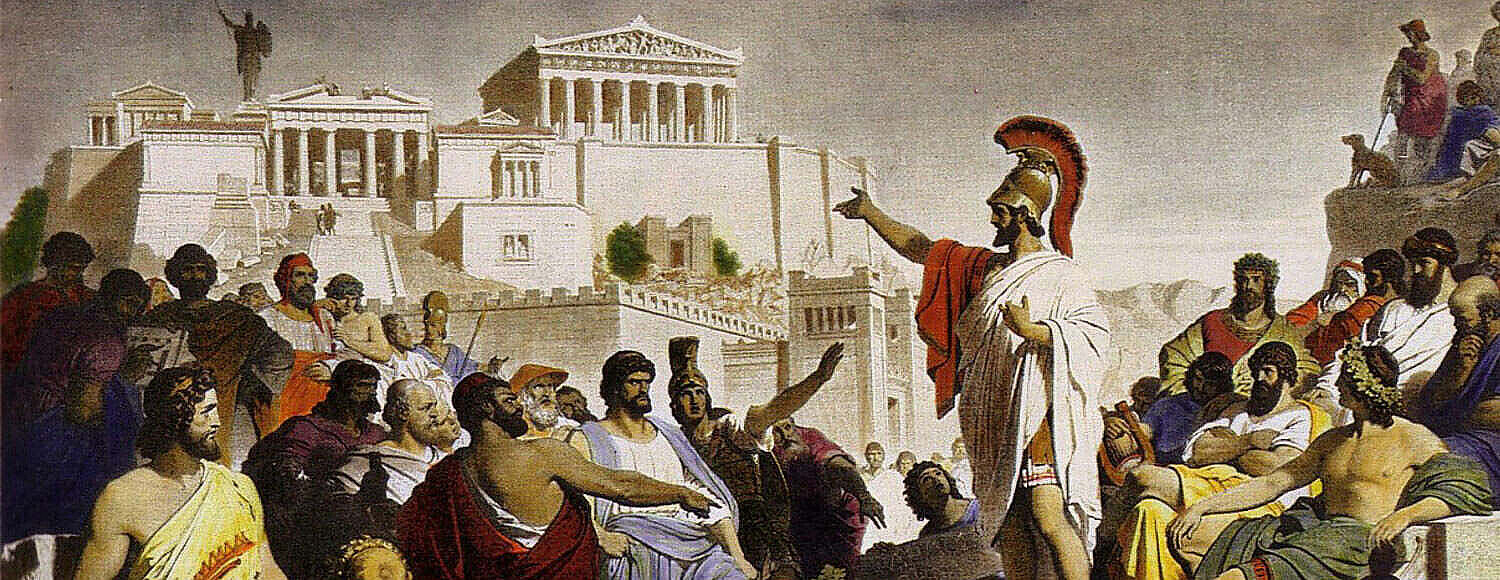…republicans believe they would lose another referendum, so they propose a plebiscite or plebiscites…
The Australian Founding Fathers were conscious of the risks associated with starting out as a republic. They had observed how Napoleon Bonaparte used constitutional plebiscites to increase his These plebiscites involved only questions without any details, and as a result, Europe suffered a great deal of war as it resisted his attempts to subjugate the continent. Napoleon III continued this practice and used plebiscites to consolidate his power. Therefore, our Founding Fathers rejected the French style of” constitutional plebiscite and instead opted for the Swiss-style referendum, where the issue is on the table before, rather than after the vote. hold on power. also noted how a “blank cheque.
[Read more: WHY OUR FOUNDING FATHERS WOULD NOT HAVE A BAR OF CONSTITUTIONAL PLEBISCITES]
[Read more: HOW THE FOUNDING FATHERS INTENDED THE AUSTRALIAN REFERENDUM TO WORK]
The Founding Fathers did not want to make it impossible to change the Constitution. But as Founding Fathers Sir John Quick and Sir Robert Garran argued, there should be proper debate until the people agreed nationally and in a majority of States that the proposed change is “ desirable, irresistible and inevitable.”
Some people say the record of changes approved indicates it is too difficult to change the Constitution.
[Read more: OURS IS NOT A HORSE AND BUGGY CONSTITUTION]
Plebiscites are misused today by politicians in other countries. They will draft the question to confuse the voters, and they won’t reveal the details of their proposal.
[Read More: POLITICIANS ABUSE THE PLEBISCITE – AGAIN]
You may be interested to know what happens when politicians put the same question again. One European politician in recent times was so annoyed when the voters rejected a European Union referendum he famously said the people will “ have to keep on the voting unit they get it right.”
[Read more: REPEAT REFERENDUMS IN AUSTRALIA]
There is also a warning about the temptation a successful plebiscite might give some politicians. They could design a trick question to which a majority may say Yes. Then there is the outside possibility that they could try to bring in a republic through the back door without a referendum.
[Read more: THE TEMPTATION: CHANGE THROUGH THE BACK DOOR]
Not all politicians support the use of plebiscites in relation to constitutional change.
[Read More: Republican plebiscites slammed as irresponsible vandalism: Senator Minchin]
…plebiscites back on the agenda – for one reason…
As a result of the 2020 Summit, where republicanism became the principal issue, the plebiscite (or indeed a cascading series of plebiscites) is well and truly back on the agenda. One thing is absolutely clear. The only reason for this is that Republicans believe they would lose another referendum.
So they have devised a devious scheme to circumvent the constitution. It has been complicated by the fact that Republicans cannot agree among themselves on what sort of republic they want Australians to accept.
…changing the rules when you can’t win, honestly…
Just imagine if, during a football match, one side tried to have the rules changed to give them a free kick whenever they were losing. That is the rort that the Republicans are trying to foist on the nation. And to add insult to injury, the Republicans expect the taxpayers to pay for all of this, including trying to do the impossible – to settle their endless squabbles. Australians should recall that the Prime Minister, Mr Rudd, solemnly assured voters, just before the 2007 election, that he would not proceed on a republic in his first term, “if at all.”
…Australians must “keep on voting until they get it right….”
And yet, Australians could be called to the urns on at least two or three occasions to vote again on republicanism. Three things will block this. First, Republicans are certain they would lose a referendum. Second, polling indicates that not only would they lose a referendum, but they would also lose one on the supposedly most popular model, the direct elect model.
And we haven’t yet pointed out that this will involve expensive and frequent elections for the president, vice president, governors, lieutenant governors, administrators etc., with even more politicians. The third matter which will block a move on a plebiscite is that polling indicates that this, too, would go down. And again, the people haven’t heard why these constitutional plebiscites used this way are a devious, deceitful and expensive attempt to circumvent the Constitution.
In all of these, except at the final referendum, what is being planned to replace our remarkably successful constitution will be kept from the people.
And if this process is followed in the states and territories, and if the Flag is to be changed too, we are talking about requiring up to the equivalent of 28 elections. As one leading European politician said, when the EU Constitution was rejected in votes in France and the Netherlands, the people must keep voting until they got it right. A similar view prevails among Republicans in Australia. As one leading Republican intimated, only stupid people would vote No.
…the real reason for this rort…
To repeat, Australians should be clear on one thing. The only reason for a plebiscite or plebiscite is the Republicans know they will lose another referendum. The first plebiscite will be written by spin doctors and designed to obtain the maximum vote. The second plebiscite was specifically designed to stop Australians from expressing a preference for the existing constitution. Instead, they would be forced to choose between different Republican models.
Any more than two models will be there for cosmetic purposes. One will be a repeat of the failed 1999 “politicians republic.” The other will be a republic with “even more politicians, at least sixteen more jobs for the Administrators etc. will all be elected—no doubt the taxpayer will fund their political campaigns too.
The one choice Australians won’t have in this second vote is to express a preference for the existing constitution. This is because Republicans fear that the existing constitution will win. Most experts think the direct election model would prevail with Australians forbidden to vote for the existing constitution.
…the Beazley proposal…
The first serious proposal for this cascading series of plebiscites and referenda, presumably federal and state, was made by the then Leader of the Opposition Kim Beazley at the 2000 ALP National Conference. “We need a process which gives all Australians a greater sense of ownership and genuine involvement in any proposal for a republic. As I have said publicly, this could be achieved with the three-step consultative process, which would begin with a plebiscite on the threshold question: do we want an Australian as our Head of State? “If a majority of people agree, a second plebiscite would follow to determine the preferred mode of selecting the Head of State. Finally, a constitutional referendum would be held based on the outcome of the two plebiscites.”
No doubt to the surprise of his audience, Mr Beazley disowned the model for which he had so vigorously campaigned in 1999. The fault, he said, was all Mr Howard’s. The process Mr Howard “set up failed to deliver Australians a model they could accept”!
[See David Flint, “Mr Beazley and His Plebiscites,” (2001) Volume 13 of the Proceedings of the Samuel Griffith Society: http://www.samuelgriffith.org.au/papers/html/volume13/v13chap8.htm]
…an expensive Senate inquiry…
Then in 2004, a Senate inquiry, held at great cost to the taxpayer, recommended the government proceed with Mr Beazley’s cascading series of plebiscites.
But after Professor Greg Craven explained to her that the second plebiscite was likely to lead to the choice of the direct elect model, Senator Marise Payne dissented on this point (see this column, “Like A Lead Balloon – Senate Committee Report On Republic,” 8 September 2004). Then, just before the 2004 election, Opposition Leader Mark Latham promised that the holding of the three federal votes would be compressed into the first term of a Latham government.
…the 2020 Summit and abuse of power…
The 2020 Summit was remarkable for two reasons, both of which demonstrate that Australians cannot trust the Republicans not to abuse power.
That is a charge we do not make lightly. But the behaviour of the Republicans at the summit more than demonstrated this, apart from their extraordinary incompetence in managing the process. School students running model parliaments do far better.
The first reason the Summit was remarkable was the ruthless way in which the patently ridiculous vote of 98:1 in favour of a republic was achieved.
This has never been seen in this country, at least in government-organised consultations. As we said at the time, the gerrymander of the Summit selection process was one of which Robert Mugabe would have been envious. Then the principal Summit decision on a republic, that about the ending constitutional ties with the UK, was shown to be based on a complete misunderstanding of the legal and constitutional position.
Within ten days, the records were surreptitiously changed. It was as if Orwell’s Ministry of Truth was in charge. A call for one plebiscite was substituted in its place. The interesting thing is not only that this bears absolutely no resemblance to what was apparently approved at the subgroup, the governance panel and the plenary session.
It is also that this mentions only one and not two plebiscites which were ALP policy under Kim Beazley and Mark Latham and the process the Republican-dominated Senate committee chose in 2004, at great expense to the taxpayer. In changing the Summit decisions, the Republicans who favour direct election have been tricked out of having their second plebiscite, which the conservative Republicans fear.
Curiously, they don’t seem to have noticed… yet. This underhand way of changing the Republican agenda demonstrates the continuing and clearly irreconcilable divisions among Republicans. But above all, no one should be in any doubt. We repeat – the only reason a plebiscite or plebiscites have been proposed is that the Republicans think they will lose another referendum.
… Subverting the Constitution …
ACM remains totally opposed to holding a vague “blank cheque” plebiscite when the constitution provides the process for popular consultation and decision, the referendum. They say a plebiscite goes against the constitution’s spirit, if not the letter. Above all, it would be wrong to ask the people to cast a vote of no confidence in one of the world’s most successful constitutions, with the details of the proposed change being kept from them and no guarantee that change would follow.
This would be a recipe for an extended period of constitutional instability. It would be difficult to conceive of a more irresponsible act than this.
As Senator Nick Minchin said on 13 June 2008:“If Labor wants to destroy our Constitutional Monarchy, it should seek to do so in the only legitimate, honest and lawful manner available – by way of a Referendum to amend our Constitution. “The only legitimate way for Labor to bring about its Republican paradise is to agree on the details of a Republican system of Government, pass the requisite legislation through the Commonwealth Parliament, and put the proposed constitutional amendments to the Australian people in a Referendum.
“It is our responsibility to demand of Labor that they abide by the process for Constitutional change laid down so wisely by our Founding Fathers.
“We cannot let them get away with the fraud and deceit of a plebiscite based first on the fatuous proposition that we need a republic in order to have an Australian Head of State.” Fraud and deceit indeed!




